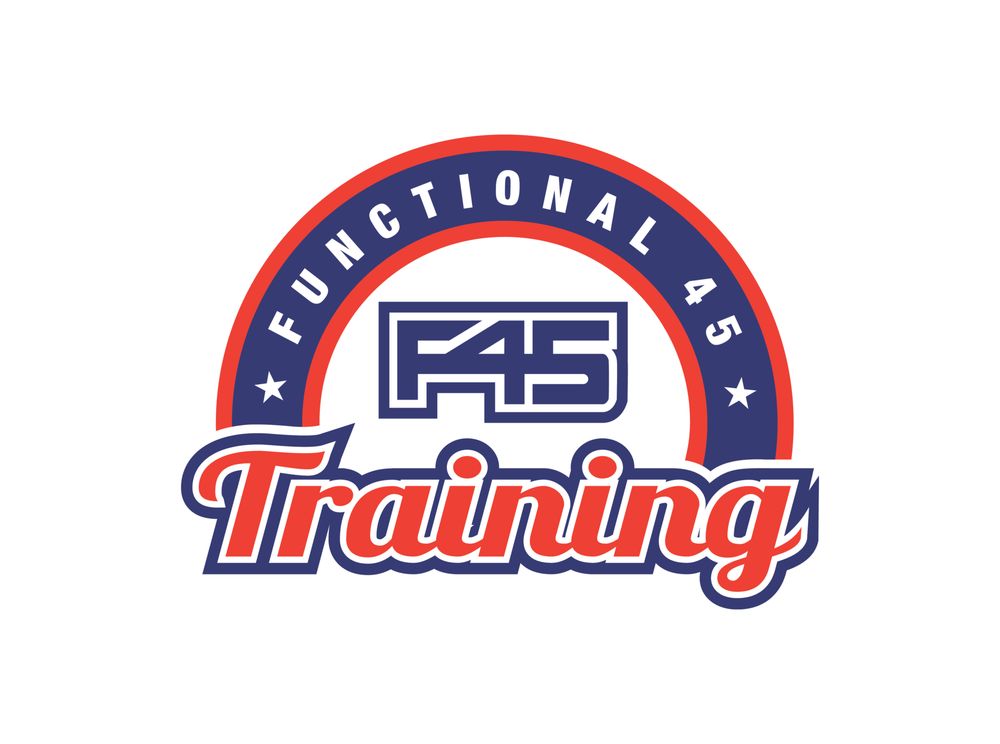Orange Theory Franchise in 2025: Costs, Fee & FDD
Discover the costs, fees, and financial insights of owning an Orangetheory franchise. Learn about the initial investment, potential earnings, and the support system that makes this innovative fitness brand a standout opportunity for franchisees.
Table of Contents:
Orangetheory, founded in 2010 by Ellen Latham, Jerome Kern, and David Long, has quickly become a prominent name in the fitness industry. Originating in Fort Lauderdale, Florida, this fitness franchise is celebrated for its innovative workout approach, combining science, coaching, and technology to deliver a unique and effective fitness experience. Its significance lies in its rapid growth and widespread popularity, appealing to a broad demographic seeking a results-driven fitness routine.
At its core, Orangetheory offers group fitness classes that revolve around heart rate-based interval training. The classes are designed to keep participants in the “orange zone,” where their heart rates are elevated to 84-91% of their maximum, optimizing calorie burn and improving cardiovascular health. Alongside the primary fitness classes, Orangetheory also provides additional services such as personal training and specialized workout programs. The core market includes fitness enthusiasts, individuals looking to lose weight, and those aiming to improve their overall health and fitness levels.
Orangetheory has achieved impressive growth, boasting over 1,300 locations across the U.S. With a daily customer base of thousands, it’s evident that the franchise’s appeal is widespread and continues to grow. The scalability of the franchise has allowed it to establish a strong presence both domestically and internationally, making it a formidable player in the global fitness industry.
The franchise support system at Orangetheory is robust, offering comprehensive training programs for new franchisees. This includes initial training at the corporate headquarters, ongoing support, marketing assistance, and access to proprietary fitness technology and software. Franchisees benefit from a well-structured support network designed to ensure operational efficiency and success. The franchise also highlights a strong community feel, encouraging collaboration and support among franchise owners, which is a significant advantage for those entering the Orangetheory network.
Orangetheory Franchise Insights
- Orangetheory’s heart rate-based interval training, backed by science, can burn up to 1,000 calories per hour, making it one of the most effective fitness programs available.
- The franchise has a high member retention rate, with many clients staying for years due to the results-driven and community-focused environment.
- Each class is led by certified coaches and utilizes state-of-the-art fitness technology to track individual performance in real-time, ensuring personalized and efficient workouts.
- Orangetheory’s global presence spans over 20 countries, showcasing its universal appeal and the potential for franchisees to tap into an extensive, established market.
- The brand’s commitment to innovation includes regular updates to workout routines and the incorporation of the latest fitness trends, keeping members engaged and attracting new clients.
Orangetheory Franchise Key indicators
3-Year Failure Rate (%)
3%
vs industry 9%
Total U.S. Franchised Units
over 1,300
How much does it cost to open an Orangetheory franchise?
Understanding the potential investment size and capital requirements is crucial when considering opening a Orangetheory franchise. These financial commitments, including initial franchise fees, equipment costs, and ongoing operational expenses, impact the feasibility and profitability of the venture. Thoroughly evaluating these factors ensures that potential franchisees are prepared for the financial responsibilities and can make informed decisions about their ability to sustain and grow the business, ultimately contributing to long-term success.
Min & Max Investment
Opening an Orangetheory franchise involves several key costs, which are outlined in Item 7 of the Franchise Disclosure Document (FDD). You can see a breakdown of the costs to open a Orangetheory below from the most recent Item 7 below:
| Type of Expenditure | Minimum Investment | Maximum Investment |
|---|---|---|
| Initial Fee | $59,950 | $59,950 |
| Travel and Living Expenses During Training | $1,200 | $4,800 |
| Deposit for Leasehold | $0 | $60,000 |
| Rent (one month) | $3,360 | $40,000 |
| Leasehold Improvements and Construction Costs | $380,000 | $1,000,000 |
| Fitness Equipment (including installation) and OTbeat™ Start-Up System | $149,250 | $214,750 |
| Technology – Software Licensing Fee | $4,495 | $4,495 |
| OTbeat Fee (3 months) | $697 | $697 |
| Fitness Equipment Maintenance | $900 | $2,400 |
| Initial Inventory of Orangetheory® Fitness Retail Merchandise | $4,000 | $6,000 |
| AED and First Aid Equipment/Training | $1,000 | $5,000 |
| Exterior Signage | $5,000 | $14,000 |
| Technology System | $70,000 | $98,500 |
| Pre-Sale and Grand Opening Advertising | $30,000 | $40,000 |
| Presales Training Program | $0 | $4,900 |
| Business Licenses/ Miscellaneous Opening Costs | $1,000 | $3,000 |
| Insurance | $3,500 | $5,000 |
| Additional Assistance | $0 | $5,500 |
| Additional Funds – 3 Months | $15,000 | $60,000 |
| Total | $729,352 | $1,628,992 |
Item 7 in the Franchise Disclosure Document (FDD) is the “Estimated Initial Investment” section. It outlines the total costs a franchisee can expect to incur when starting a franchise, including the initial franchise fee, equipment, inventory, real estate, and other startup expenses. This section is crucial because it provides potential franchisees with a detailed understanding of the financial commitment required, helping them assess affordability and plan their investment strategy effectively.
Required Capital
To open a Orangetheory franchise, the required capital involves both the initial investment costs and a net worth requirement set by Orangetheory. Let’s take a closer look below:
To open an Orangetheory franchise, the required capital can vary, but typically, the initial investment ranges from roughly $730,000 to $1.63 million, so the required capital would be 20% assuming that you are able to attain financing. This estimate includes costs for equipment, leasehold improvements, initial franchise fees, and other startup expenses.
Also prospective franchisees should be expected to have liquid assets of at least $150,000 and a net worth of approximately $500,000.
These figures can vary based on location and other factors, so it’s essential to consult with Orangetheory’s franchising team for the most accurate and up-to-date information as you go through the evaluation process.
How much does a Orangetheory franchise owner make?
Calculating the salary of a Orangetheory franchise owner involves analyzing gross sales to determine total revenue, assessing operational efficiency to understand profit margins, and accounting for franchisor fees and additional expenses such as rent, utilities, and payroll. Effective management of these factors can significantly impact the profitability and financial success of a Orangetheory franchise owner. This comprehensive financial analysis helps estimate net profits, from which the owner’s salary can be derived. A clear understanding of these factors ensures accurate salary projections and financial planning for sustainable business operations.
Orangetheory Revenue & Gross Sales
As of 2024, Orangetheory no longer discloses financial performance in the Item 19 of their FDD. Note that this is typically not a good sign as it indicates that sales may be dropping.
From our analysis and calculations of Orangetheory royalties and number of units, we estimate that Orangetheory franchises have a median gross sales of $800,000 per location. This would reflect a continued growth in location gross sales over the past couple of years. This strong financial performance for a boutique fitness concept underscores the brand’s robust consumer demand and potential for lucrative returns for franchisees.
Which key factors impact the average revenue performance of Orangetheory franchisees?
The growth of U.S. franchisee median gross sales revenue at Orangetheory can be attributed to several key factors. First, the increasing consumer demand for health and fitness solutions has driven more people to seek out effective workout programs like those offered by Orangetheory. The brand’s unique, science-backed fitness model, which provides measurable results, has also attracted a loyal customer base. Additionally, Orangetheory’s robust marketing strategies, community engagement, and consistent updates to workout routines have kept members engaged and attracted new clients. The franchise’s comprehensive support system for franchisees, including training and operational assistance, has further ensured successful business operations, contributing to the overall revenue growth.
Orangetheory Franchise Operational Costs
When opening a boutique fitness franchise like Orangetheory, several key ongoing operational costs should be considered:
- Lease/Rent Monthly payments for the location, which can vary significantly based on size and geographic area.
- Employee Salaries and Benefits Compensation for certified coaches, front desk staff, and management, along with any benefits packages.
- Equipment Maintenance and Upgrades Regular maintenance of fitness equipment and potential costs for upgrading or replacing equipment as needed.
- Marketing and Advertising Ongoing local and national marketing campaigns to attract and retain members.
- Utilities and Facility Expenses Costs for electricity, water, internet, and other essential utilities, along with general maintenance of the facility.
- Franchise Fees and Royalties Regular payments to the franchisor, typically a percentage of gross sales.
- Insurance Liability, property, and workers’ compensation insurance to protect the business and employees.
- Technology and Software Subscription fees for member management systems, fitness tracking technology, and other essential software tools.
These costs can fluctuate based on location, member base size, and specific franchise requirements, so it’s crucial to plan and budget accordingly. Of the costs listed above, the most important ongoing cost that will dictate the success or failure of a boutique fitness franchise like Orangetheory is the lease/rent cost.
Orangetheory Franchise Fees
Owning an Orangetheory franchise is different from owning an independent, non-franchised business. All franchises tend to charge ongoing fees that franchisees are required to pay to operate. Orangetheory requires their franchisees to pay the below fees:
- Royalty Fee This is a monthly fee paid to Orangetheory, typically calculated as a percentage of gross sales. For Orangetheory, this fee is usually 8% of the restaurant’s monthly gross sales.
- Advertising and Marketing Fees Franchisees are required to 3% of gross sales to the marketing fund while also allocating funding to local marketing efforts.
- Additional Fees There are additional fees for training programs, technology, and other items provided by Orangetheory corporate that may be applied.
These ongoing fees are essential to consider when planning the financial aspects of owning and operating an Orangetheory franchise. They cover the costs of brand support, advertising, and ongoing operational assistance provided by Orangetheory.
Orangetheory Franchise Earnings
The earnings of an Orangetheory franchise owner can vary significantly based on a variety of factors including location, sales volume, operational efficiency, and cost management. However, on average, Orangetheory franchise owners can earn a significant income.
Orangetheory franchisees have a median gross sales of $800,000. Based off of the median gross sales, we can estimate an Orangetheory franchisee makes $150,000 in estimated earnings (EBITDA) per year, assuming that the franchisee is an owner-operator in the location. This means that you can consider the salary of an Orangetheory franchise owner to be roughly $150,000 before interest, taxes, depreciation, and amortization (EBITDA).
If the franchisee is semi-absentee, then earnings will be significantly lower based off of the costs of having a hired manager.
How to Open an Orangetheory Franchise
Becoming an Orangetheory franchisee involves several key steps, starting from the initial inquiry to the opening of your fitness studio:
- Initial Inquiry You or your franchise specialist submits an initial inquiry basic information about your interest and background.
- Preliminary Assessment After submitting your inquiry, you’ll undergo a preliminary assessment where the franchisor reviews your qualifications, financial status, and overall fit for the brand.
- Franchise Disclosure Document (FDD) If you pass the initial assessment, you’ll receive the Franchise Disclosure Document, which provides detailed information about the franchise, including financial requirements, franchisee obligations, and franchisor commitments.
- Discovery Day Attend a Discovery Day at Orangetheory’s headquarters. This event allows you to meet the corporate team, tour facilities, and gain a deeper understanding of the business model and support systems.
- Application and Approval Submit a formal franchise application, including financial statements and background information. The franchisor will review your application and conduct interviews to ensure you are a good fit for the franchise.
- Signing the Franchise Agreement Upon approval, you will sign the Franchise Agreement, officially making you a franchisee. This step involves paying the initial franchise fee.
- Securing a Location Work with Orangetheory’s real estate team to find and secure a suitable location for your studio. This includes site selection, lease negotiations, and obtaining necessary permits.
- Training and Onboarding Participate in comprehensive training programs provided by the franchisor, covering all aspects of running an Orangetheory studio, from operations and marketing to fitness programming and member management.
- Studio Build-Out Oversee the build-out and design of your studio, following Orangetheory’s specifications and guidelines. This includes purchasing and installing equipment, interior design, and setting up technology systems.
- Pre-Opening Marketing Launch pre-opening marketing campaigns to build awareness and generate memberships before the studio officially opens.
- Hiring Staff Recruit and train your staff, including coaches, front desk personnel, and managers, ensuring they meet Orangetheory’s standards and are prepared for opening day.
- Grand Opening Host a grand opening event to introduce your studio to the community, attract new members, and kickstart operations.
By following these steps, you’ll be well-prepared to open and successfully operate your Orangetheory franchise.
Pros & Cons
Pros
Proven Business Model: Orangetheory has a well-established and successful business model with a strong brand reputation in the fitness industry.
High Demand: The growing consumer interest in health and fitness ensures a steady demand for Orangetheory’s services.
Innovative Workouts: The heart rate-based interval training system is unique and effective, attracting and retaining a loyal customer base.
Strong Community: The franchise fosters a sense of community among members and franchisees, enhancing customer retention and franchisee satisfaction.
Marketing Power: Access to national and regional marketing campaigns helps drive brand awareness and member acquisition.
Scalability: With the potential for multi-unit ownership, successful franchisees can expand their operations and increase their revenue streams.
Cons
High Initial Investment: The startup costs, including franchise fees, equipment, and facility build-out, can be substantial.
Ongoing Fees: Franchisees must pay ongoing royalties and marketing fees, which can impact profit margins.
Competitive Market: The fitness industry is highly competitive, with numerous boutique fitness studios and gyms vying for the same customer base.
Operational Demands: Running a fitness studio requires significant time and effort, including managing staff, maintaining equipment, and ensuring high customer satisfaction.
Market Saturation: In some areas, there may be a high concentration of Orangetheory studios or similar fitness concepts, potentially limiting market potential.
Economic Sensitivity: The fitness industry can be sensitive to economic downturns, as discretionary spending on fitness memberships may decrease.





